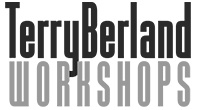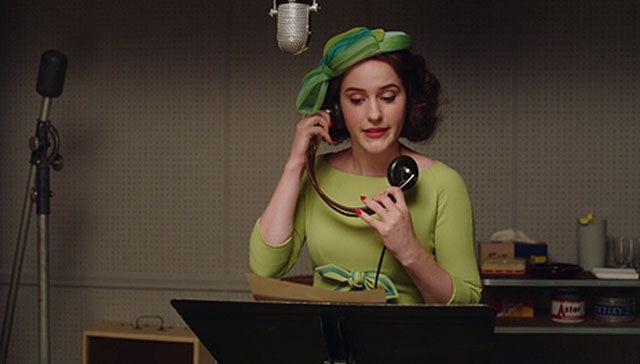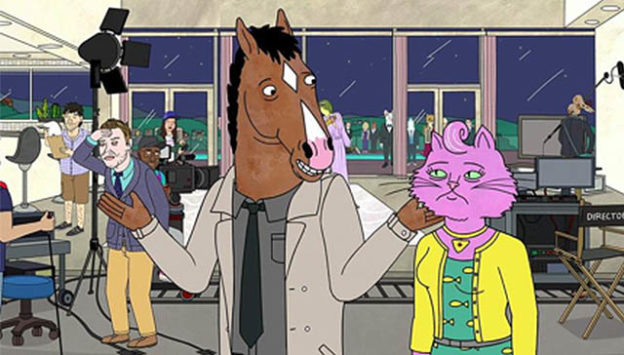Written by Terry Berland @berlandcasting for Backstage Industry Expert Advice.
Although I love everything about Amazon’s series “The Marvelous Mrs. Maisel,” I realized recently that it was the seventh episode in the third season that amusingly piqued my interest more than usual. Titled “Marvelous Radio,” it depicted Midge beginning to record voiceover and started me thinking about how much has changed in VO since the ‘50s and what actors need to know about the biggest change: home reads.
In this episode, Midge’s manager Susie Myerson discovers it’s a good idea for Midge to do radio commercials to bring in some cash flow between comedy club gigs. She tells Midge “it’s a good thing to sustain us until we go back on tour.” The portrayal of voiceover recording sessions we then see in the episode show how differently they were handled than today. For her first commercial radio recording session, Midge questions her role: “Housewife?” The director answers, “What else?!” Then she picks up the script and proceeds to read, never having made any choices and with no rehearsals. Her read is recorded in a flat, one-note tone and voila! She’s now a pro!
Subsequently, we watch her record a series of spots, each in one take, as she runs from studio to studio. At one point she receives some brief direction while she is still moving and at a different session when she is finally given direction for a funeral home spot, she has no technique to use.
Of course, everything in the show is comically skewed and brilliantly stylized. Although the stylization of the show is sharply heightened, it’s interesting to note there are definitely reality-based differences of voiceovers in 1958 and today. For example, we can’t help but notice that everything is being recorded on a large reel to reel tape machine, and without the internet, everyone auditioned with a casting director or producer before ultimately being sent to the client for final approval. Throughout the years, reads have become more real and relatable to the listener as well. It’s a given that you must know good technique to be competitive. The hugest change though has been influenced by the internet with the largest portion of auditions now submitted as home reads.
A home read is equivalent to a self-taped on-camera audition. So how can you ace your home read since you won’t be seen in person like Midge? Here are some pointers.
1. Know how to prepare a good audition.
Learn how to analyze copy. Get really comfortable with your choices in preparation for your recording. Print out your script and mark your copy to guide you in your read. I’m aware that some people audition for a large volume of options they find online so they don’t have time to mark up scripts. However, I don’t believe you should just submit a large number of auditions like that. It’s worth taking the time to make sure you’re prepared in the best way possible for any audition instead of recording quickly and submitting a large volume as a numbers game.
2. Know how to direct yourself.
You need to know how to direct yourself for all your home reads. I’d like to introduce the idea of stepping away from what you’ve recorded for about five minutes before then listening back to your read. Get to a point where you can discern nuances such as joy, concern, positivity, brightness, and connection. Re-do your read if necessary. You might be thinking, “I don’t have enough time to step away for so long, I have several pieces of copy to record.” There are times you are unfortunately given too little notice to prepare properly, but there are other times it’s just a matter of time management. One way to make this work is to alternate by working on one piece of copy, stepping away from it, and then working on another piece. You can then revisit each piece a couple of times.
3. Don’t over-edit.
You can edit anything to make it sound good. You can take out breaths and pauses or you can keep re-doing a section. If you over-edit, your final submitted read is not really what you authentically can do. If you get booked you won’t be able to come through at the recording session. You’re not doing yourself a favor and certainly not doing the person who booked you a favor.
4. Follow directions.
As a casting director, I have certain roles come to my office where I call people in to audition with direction and others to submit home reads back to me. For the home reads, I include specific directions along with the copy as to how to submit your read. It’s important to carefully follow each project direction, as everyone does it their own certain way. Why is this important? When I, or whoever is organizing the submitted home reads to send to the client, they must be highly organized. Everything should be uniform. An example of some of the directions you might see is, “state your name with no agent,” “give us two takes and call the second take, take number two,” etc. There are so many extremely talented VO artists that you can easily be dropped from being submitted if you did not follow the directions.
If you want to sharpen up on your voice-over technique, follow this link to Terry Berland’s Voice-Over workshops.








